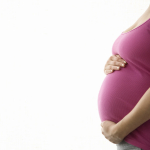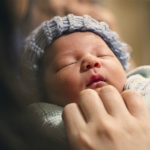While we have data on the use of lithium use during pregnancy with regard to risk for congenital malformations, there is much less information on the long-term effects of lithium on neurodevelopment. A recent study from the Perinatal Center of the Leiden University Medical Center provides some reassuring data on the long-term effects of lithium exposure.
All of the mothers included in this study were initially seen in the clinic between 1994 and 2007 and were taking lithium during pregnancy for the treatment of bipolar disorder. These women were contacted at a later time, and 15 children who were exposed to lithium in utero were evaluated at 3 to 15 years of age. In addition to lithium, 9 out of 30 children were exposed to other psychotropic medications: 2 were exposed to antidepressants, 1 to benzodiazepines and 1 to an antipsychotic drug.
Neurological development was assessed using the Hempel or Touwen examination. Cognitive development was assessed with the Bayley Scales of Infant Development III, Wechsle Preschool and Primary Scale of Intelligence (WPPSI) or the Wechsler Intelligence Scale for Children. Parental assessments of behavior and overall development were collected using the Child Behavior Checklist.
One child had signs of a minor neurological dysfunction, but without significant clinical implications. Growth, behavior and general development were within the normal range. The results of the cognitive tests were also within normal limits, although most children had lower scores on the performance IQ subtest. (This study did not include a specific comparison group.)
These findings are consistent with preliminary data presented by Dr. Adele Viguera in 2006. In this report, the final analysis included children exposed to lithium at any point during pregnancy (n=32) and children not exposed to lithium or any other mood stabilizer during pregnancy (n=24). Childhood development was assessed by a blinded rater using the Bayley Scales of Infant Development-II (BSID-II) and the WPPSI. Children were assessed at 2.5 to 3.5 years for the BSID-II and from 3.5 to 7.3 years of age for the WPPSI. There were no significant differences in the mean or range of global IQ scores of children exposed to lithium in utero versus non-exposed children. Average developmental scores for the lithium exposed group were slightly lower in the exposed group as compared to the control group but well within the average range.
Overall these reports are reassuring and suggest that continuing lithium therapy during pregnancy does not pose significant risk to the neurological, cognitive and behavioral development of exposed children. However, these studies are preliminary and relatively small in size. Clearly there is need for more systematic study in larger samples of women in order to better understand the impact of lithium on neurobehavioral outcomes.
Ruta Nonacs, MD PhD
van der Lugt NM, van de Maat JS, van Kamp IL, et al. Fetal, neonatal and developmental outcomes of lithium-exposed pregnancies. Early Hum Dev. 2012; 88(6): 375-8.








Great article, This is very helpful for me.
This was somewhat helpful to me. I have been on Lithium for over ten years and I am now 32 weeks pregnant and still on lithium. I’m working close with my doctor. I wish there was more information on this. In my case, the risks of my condition outweighed the lithium. I had not had an episode in years, but once the hormones shifted with pregnancy, it was a bit scary. They monitor my levels closely and used a level 2 ultrasound to detect heart defects ( which her heart is perfect, all four tiny chambers ) . I wish they had more info on long term. But it’s not like they can ask women to take lithium while pregnant for a study. I have known other women who have taken it while pregnant and everything is okay. I could imagine studies get hard with several factors ( women smoking, other medications, the woman’s education on safe foods ect) . Thanks for the info though.
This article gave me reassurance that staying on lithium while I am pregnant may be far better for me and my well being than getting off the medication. But like Macky I wish we had more information on the effects of lithium on the fetus. Thank you for sharing these articled they have been really helpful to me!